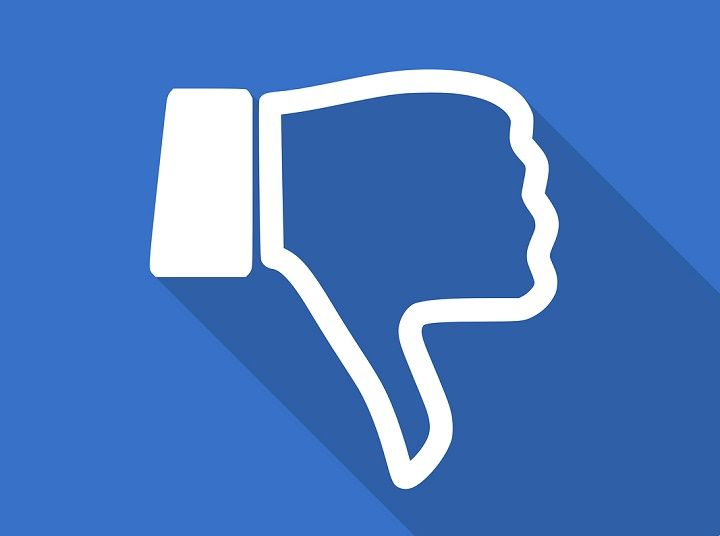Why Brands May Dislike the Facebook Dislike Button

After years of resistance, Facebook seems to be giving in to user pressure, announcing last week that it’s working on a “dislike” button. The exact form of the button has yet to be determined, although it’s more likely to have the tenderness of a sad face than the vitriol of a middle finger.
To be fair, we don’t even know if the button will say “dislike” at this point.
CEO Mark Zuckerberg is telling anyone who will listen that the dislike button will give people the opportunity to offer sympathy when a loved one is lost, or express their sadness when tragedy strikes.
“Not every moment is a good moment if you share something that’s sad like a refugee crisis that touches you or a family member passes away, it may not be comfortable to like that post,” said Zuckerberg. “I do think it’s important to give people more options than liking it.”
In other words, the dislike button isn’t intended to invite an avalanche of negativity. Of course, the best intentions are often destroyed by harsh reality.
I wish I could believe a dislike button on Facebook would be primarily used as an alternative when liking isn’t exactly appropriate.
I do think that will be the case some of the time. But not most of the time.
It’s easy to like or agree with something on Facebook. Just like it’s easy to give an endorsement on LinkedIn. All you have to do is hit a button. That’s why both are vastly overrated.
On the other hand, if you want to disagree or express yourself in a negative way, you have to leave a comment or write your own post.
That takes effort. In many cases, it takes courage.
Until the dislike button arrives.
The realist in me believes the dislike button will give people a new way to flex their overly amped up Internet muscles in a way they never would during a face-to-face or even phone interaction.
Suddenly, it will require no effort to show that you’re fed up with seeing political rants, photos of what people are having for dinner, inspirational quotes, or “TGIF!”
Every. Damn. Friday.
What does all of this mean for brands?
Well, it’s about to get a lot easier for people to poo-poo your content on Facebook.
Hitting the dislike button could be similar to giving a “thumbs down” vote to an article, comment or customer review. No anger, just disagreement.
However, some particularly brassy folks could make things ugly. An ad hater could decide to dislike every ad they see. A disgruntled customer could like your page so they can dislike all your content. A competitor could do the same thing.
Sounds childish, but this is what can happen when you give people a little power, even if that power comes in the form of something as seemingly insignificant as a dislike button.
So you need to do a few things.
First, monitor your Facebook brand page more closely and set up alerts so you know if someone is engaging with your company. Popping in once a day to see if someone liked or shared your post won’t cut it.
Second, don’t let automation make you look insensitive or oblivious to what’s going on in the world. During a tragedy, nobody wants to see a post about how to teach your kids about investing. With a dislike button, the backlash of leaving automation in cruise control could be faster and more widespread.
Finally, give more thought to developing and sharing content that doesn’t give people a reason to dislike it.
Perhaps the introduction of a dislike button will be the kick in the pants many brands need to stop approaching Facebook like they would approach a late night infomercial.
Stop shoving your sales messages in people’s faces and give them what they want from Facebook. Content that’s interesting, helpful or entertaining.
Think of Facebook like your friendly neighborhood bar. That’s where people go to catch up with friends and family, talk about their day, and discuss what’s going on in the world.
They share information, photos and videos. That’s the “social” in social media.
Facebook is Cheers, not Oxiclean.
People don’t sell to each other on Facebook. Brands shouldn’t sell to people either. If you continue to use Facebook to sell, you could be in store for a boatload of dislikes.
And then there’s the unknown factor.
I think it’s safe to assume that having an option besides liking or commenting could actually increase engagement. Based on Mr. Zuckerberg’s comments, I can’t imagine a dislike would be perceived as negative by the folks at Facebook or their algorithms.
Unless those algorithms will be able to tell if a dislike is the desired response to a post.
Suppose a post has been disliked a ton because people didn’t care for the message, the photo or the video. Will the post reach more people due to a high level of engagement, even though the response was negative? If so, will some brands try to exploit this?
Also, regardless of what the folks at Google say about Facebook likes and shares not impacting search rankings, their explanations leave room for interpretation.
We all know that Google crawls everything. Could Facebook dislikes affect search rankings in some small way, positively or negatively?
A dislike button is coming. We don’t know what it will say or look like, but it’s definitely coming. Hope for the best but prepare for the worst. Most importantly, pay attention to your brand page, and invest in content that won’t make people reach for the dislike button.
By the way, if you didn’t like this blog post, would you be more likely to leave a comment expressing your displeasure or hit a dislike button?
That’s what I thought.

